-
“Metamaterials” may mitigate earthquake damage

In the past decade scientists have been experimenting with metamaterials, artificial materials designed with periodic internal structures to give them properties not found in natural materials. Some of these materials can control waves propagating through them, filtering sound or deflecting light so that an object appears “cloaked” or invisible, for instance. Could this same principle be applied to controlling seismic waves?
-
-
California: Coastal impacts of climate change
The United States Geological Survey (USGS) says that sea-level rise is going to wreak widespread destruction on California’s coastal communities, unless these communities take urgent action to mitigate to risks. “Even the storms today have significant risk to California’s coastline,” said Patrick Barnard, the lead author of the study. “There are about $12 billion in properties that are at risk of extreme storm today, but if you look out into the future, let’s say mid-century, those numbers roughly triple to about $30 billion of property at risk with just a little bit of sea level rise, and it goes up from there,” USGS researchers Patrick L. Barnard and colleagues write in Scientific Reports.
-
-
Nuclear weapons might save the world from an asteroid strike – but we need to change the law first
The schlocky 1998 Bruce Willis movie Armageddon was the highest grossing film of that year. The blockbuster saw a master oil driller (Willis) and an unlikely crew of misfits place a nuclear bomb inside a giant asteroid heading for Earth, blow it up – and save humanity. Armageddon isn’t exactly a documentary: it’s packed full of sci-fi nonsense. But, 20 years on, its basic plot – of using a nuclear explosion to avert a cataclysmic asteroid collision – doesn’t seem quite as silly as it did at the time.
-
-
Celestial menace: Defending Earth from asteroids
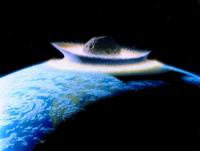
Incoming asteroids have been scarring our home planet for billions of years. This month humankind left our own mark on an asteroid for the first time: Japan’s Hayabusa2 spacecraft dropped a copper projectile at very high speed in an attempt to form a crater on asteroid Ryugu. A much bigger asteroid impact is planned for the coming decade, involving an international double-spacecraft mission.
-
-
Defending the Earth from asteroids
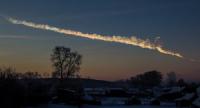
A mere 17-20 meters across, the Chelyabinsk meteor caused extensive ground damage and numerous injuries when it exploded on impact with Earth’s atmosphere in February 2013. To prevent another such impact, researchers use a simple yet ingenious way to spot these tiny near-Earth objects (NEOs) as they hurtle toward the planet.
-
-
There’s a massive cybersecurity job gap – we should fill it by employing hackers
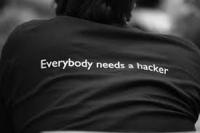
Cybersecurity incidents are gaining an increasingly high profile. These attacks are becoming increasingly sophisticated, using psychological manipulation as well as technology. To face these challenges, society needs cybersecurity professionals who can protect systems and mitigate damage. There is already an active population with a strong passion for cybersecurity – hackers.
-
-
New sensors can sense and sort troublesome gases
From astronauts and submariners to miners and rescue workers, people who operate in small, enclosed spaces need good air quality to work safely and effectively. Newly developed electronic sensors can simultaneously detect at least three critical parameters that are important to monitor to ensure human comfort and safety.
-
-
Accurately predicting harmful space weather’s “killer” electrons
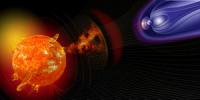
A new space weather model reliably predicts space storms of high-energy particles that are harmful to many satellites and spacecraft orbiting in the Earth’s outer radiation belt. The model can accurately give a one-day warning prior to a space storm of ultra-high-speed electrons, often referred to as “killer” electrons because of the damage they can do to spacecraft such as navigation, communications, and weather monitoring satellites.
-
-
New device creates electricity from snowfall
Researchers and colleagues have designed a new device that creates electricity from falling snow. The first of its kind, this device is inexpensive, small, thin and flexible like a sheet of plastic.
-
-
Los Alamos nuclear waste successfully shipped to WIPP
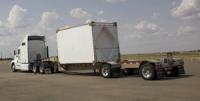
The first shipment in five years of Transuranic (TRU) waste from the Los Alamos National Laboratory has been successfully delivered to the Waste Isolation Pilot Plant (WIPP) near Carlsbad, New Mexico.
-
-
Globally, rapid urbanization increases pressure on rural water supplies
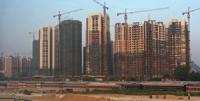
Around the world, water reallocation from rural to urban regions—the practice of transferring water from rural areas to cities to meet demand from growing urban populations – is intensifying. Researchers found that 69 cities with a population of 383 million people receive approximately 16 billion cubic meters of reallocated water per year—almost the annual flow of the Colorado River.
-
-
Predicting, understanding urban flooding
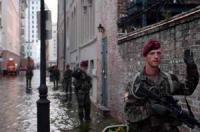
Flooding is the natural hazard with the greatest economic and social impact on the population of the United States. Urban flooding is a complex and distinct kind of flooding, compounded by land use and high population density, and it requires a different approach to assess and manage.
-
-
Owners of unprotected coastal homes don’t rush to retrofit
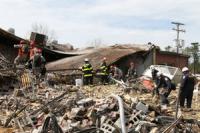
Many coastal homes have significant structural vulnerabilities that leave homeowners and their homes largely unprotected from storms. Additionally, the majority of coastal homeowners have little to no intention of reducing these structural vulnerabilities, even though they live in areas frequently affected by damaging hurricanes and flooding.
-
-
Driving force of volcanic super-hazards uncovered
Volcanologists have discovered the driving force behind superheated gas-and-ash clouds from volcanic eruptions, which may help save lives and infrastructure around the globe. Endangering 500 million people worldwide, pyroclastic density currents (or pyroclastic flows) are the most common and lethal volcanic threat, causing 50 percent of fatalities caused by volcanic activity.
-
-
Predicting impacts of extreme events on grids
A new, free, open-source software reliably predicts how damage from hurricanes, ice storms, earthquakes, and other extreme events will restrict power delivery from utility grids. The Severe Contingency Solver for Electric Power Transmission is the only software available—commercially or open-source—that reliably supports analysis of extreme events that cause widespread damage.
-
More headlines
The long view
Helping Strengthen America’s Critical Infrastructure
Everyday life depends on a robust infrastructure network that provides access to running water, communications technology and electricity, among other basic necessities. The experts who keep our national infrastructure secure and resilient also need a strong network to share their knowledge and train the next generation of professionals capable of solving complex infrastructure challenges.
AI and the Future of the U.S. Electric Grid
Despite its age, the U.S. electric grid remains one of the great workhorses of modern life. Whether it can maintain that performance over the next few years may determine how well the U.S. competes in an AI-driven world.
Using Liquid Air for Grid-Scale Energy Storage
New research finds liquid air energy storage could be the lowest-cost option for ensuring a continuous power supply on a future grid dominated by carbon-free but intermittent sources of electricity.
Enhanced Geothermal Systems: A Promising Source of Round-the-Clock Energy
With its capacity to provide 24/7 power, many are warming up to the prospect of geothermal energy. Scientists are currently working to advance human-made reservoirs in Earth’s deep subsurface to stimulate the activity that exists within natural geothermal systems.
Experts Discuss Geothermal Potential
Geothermal energy harnesses the heat from within Earth—the term comes from the Greek words geo (earth) and therme (heat). It is an energy source that has the potential to power all our energy needs for billions of years.
